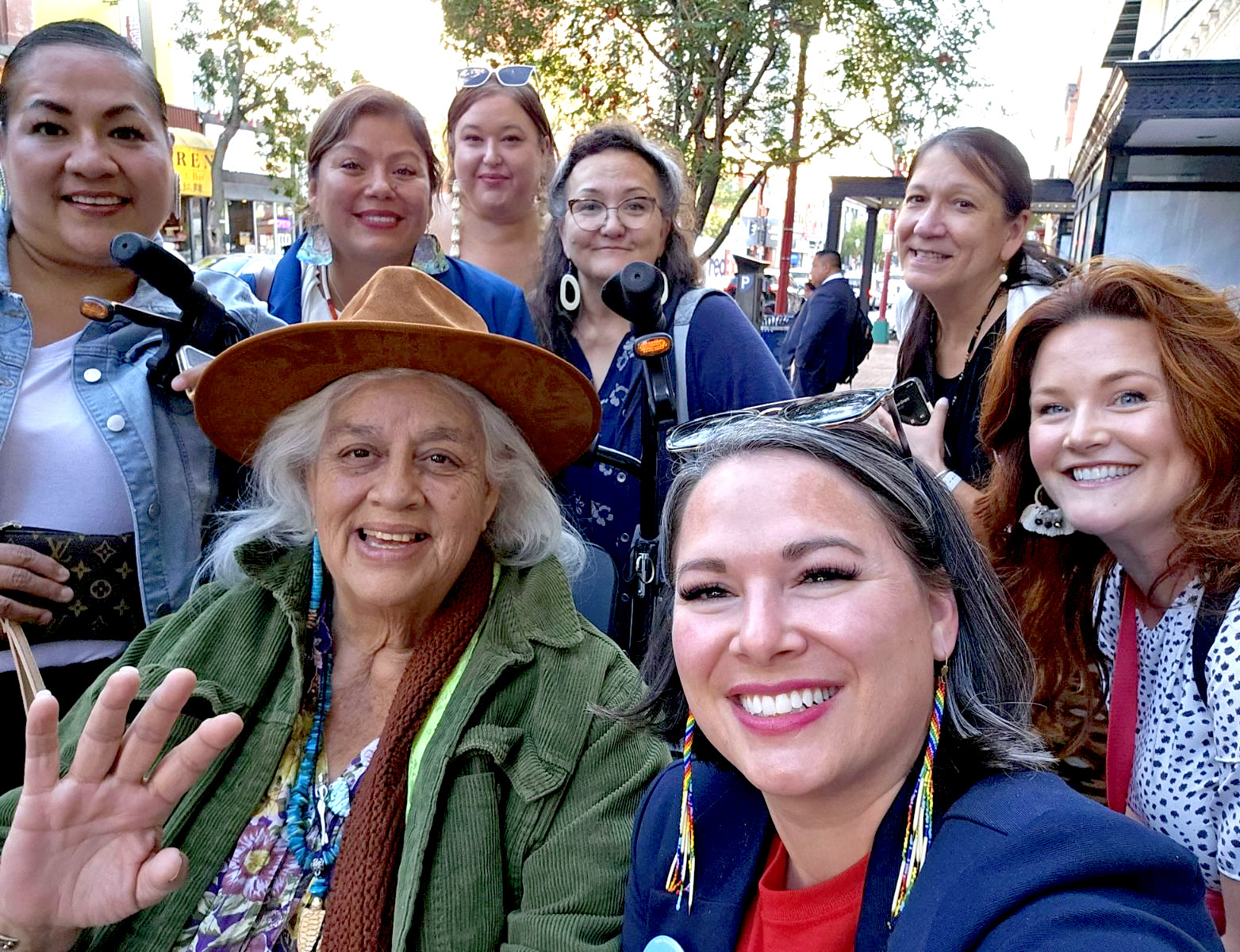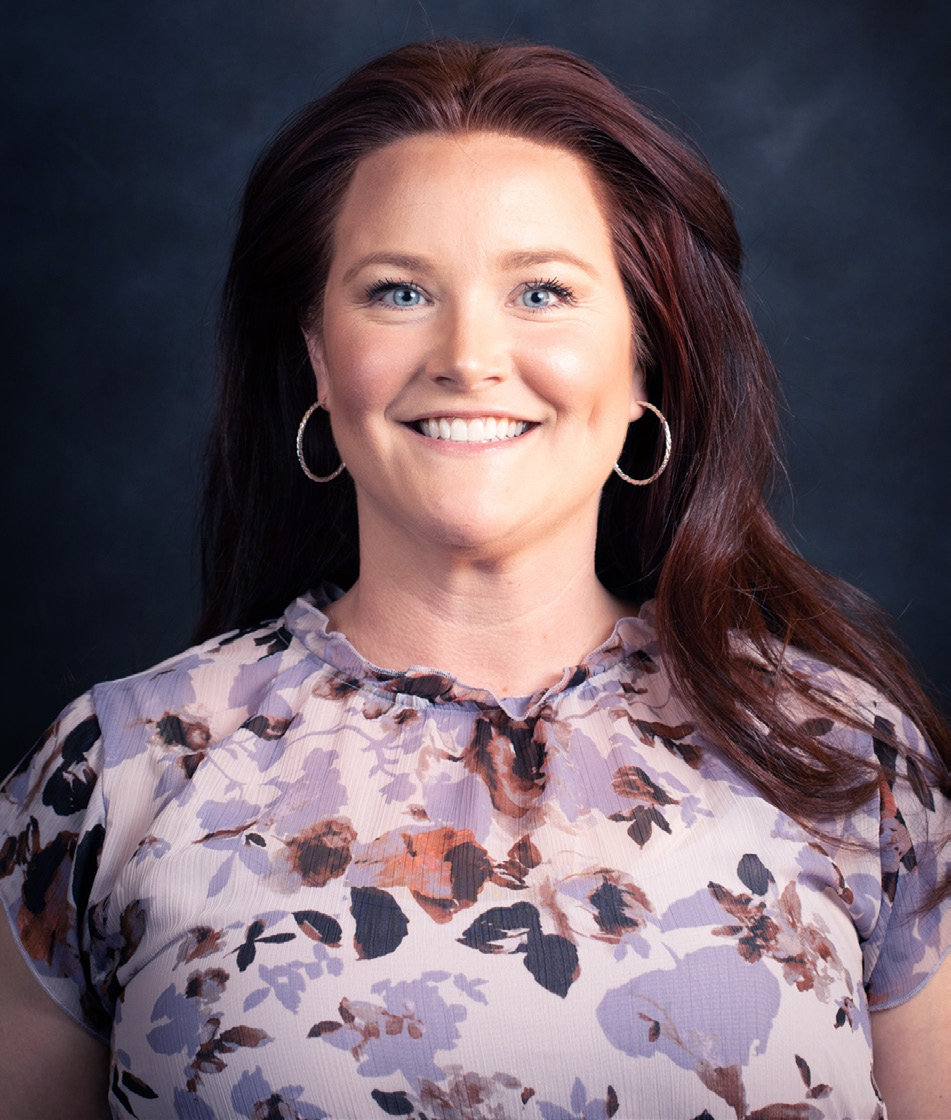

By Rebecca Sherman
Jolene Hardesty has faced challenges in her 20 years of public service—from her early days as a 911 sheriff’s office dispatcher to her current role as Missing Children’s Clearinghouse Analyst and Missing Persons Coordinator for the Michigan State Police.
And while she has helped rescue an estimated 600 children by providing analytical, resource, and training support to regional, state, federal, and Tribal law enforcement, she can now count another challenging assignment as a win: 15 months of service on the Not Invisible Act Commission.
For Hardesty, the experience was equal parts daunting, rewarding, and eye- opening. She worked with 35 others from across the nation to fulfill the Commission’s goals, as follows.
- Identify, report, and respond to cases of missing and murdered Indigenous people (MMIP) and human trafficking.
- Develop legislative and administrative changes to enlist federal programs, properties, and resources to help combat the crisis.
- Track and report data on MMIP and human trafficking cases.
- Consider issues related to the hiring and retention of law enforcement officers.
- Coordinate Tribal, state, and federal resources to combat MMIP and human trafficking on Indian lands.
- Increase information-sharing with Tribal governments on violent crimes investigations and criminal prosecutions on Indian lands.
The Commission held hearings across the nation, receiving heartbreaking yet critically important testimony from hundreds of victims, survivors, family members, family advocates, and members of law enforcement.
In the fall of 2023, Hardesty and her fellow Commissioners submitted their final report to U.S. Attorney General Merrick Garland, the U.S. Department of the Interior Secretary Deb Haaland, and Congress.
With May designated as Missing and Murdered Indigenous Peoples (MMIP) Awareness Month (and May 5, National MMIP Day, also known as “Wear Red Day”) we talked with Hardesty about her work on the Not Invisible Act Commission—and what’s on the horizon.
Tell us a bit about your work on the Not Invisible Act Commission.
Each day was spent gearing up and prepping for meetings. I read a lot—federal statutes, statistical reports, and notes from other initiatives prior to the Not Invisible Act, such as Operation Lady Justice. Many weeks we met multiple times and brought in subject-matter experts to answer questions. I also gave in-person [congressional] testimony in D.C. as an expert on missing children, and traveled to Minnesota and Montana for public testimony. We were organized into subcommittees based on our experience. I was co-chair of Subcommittee Two, which focused on MMIP data. And on Subcommittee Four, we looked at coordinating resources, criminal jurisdiction, prosecution, and information sharing— for instance, understanding how the NCIC [National Crime Information Center] database is aggregated, and what shortfalls it presents.
![Information sidebar: Not Invisible Act: Key findings Jolene Hardesty shares thoughts from her Not Invisible Act Commission work. Resources are desperately needed. “We heard testimony from an Alaska Native woman whose sister was murdered in her home—and she lay dead on the floor for three days because no police came to investigate,” Hardesty says. “There are also villages in Alaska that don’t have a fire department; villages that take a State Trooper three days by airplane to reach; and villages where Tribes don’t have a police department—or if they do, officers are not staffed 24/7. These departments lack the funding, resources, people, or skill sets to have an appropriate response, much less an immediate one.” Jurisdiction can be a problematic puzzle. In Oklahoma, where nearly half the land is Tribal owned, “you have a checkerboard of different Tribes, and criminal jurisdiction isn’t clear,” she says. For instance, a crime that happens on the northwest quadrant of a street may be the responsibility of a different Tribe than one on the southwest quadrant. And if the crime is murder, another jurisdiction may need to be involved. “Keeping up with the matrix needed to determine who’s going to respond to a crime can be overwhelming,” she says. Justice is often meted out differently. “Tribal law enforcement and courts are limited in what they can do [and often include social-rehabilitation measures]. If a murder occurs on Indian land, the most jail time imposed [may be] nine years,” Hardesty says.](https://amberadvocate.org/wp-content/uploads/2024/04/16b-Key-Findings.png) How does the way data is collected present a problem?
How does the way data is collected present a problem?
In NCIC, there aren’t enough race categories—it’s either “Alaska Native” or “American Indian.” Beyond that, it’s also important to know if a person is a member of the Cherokee or Crow Nation, for instance, or maybe also affiliated with another Tribe. Grouping people into one category doesn’t serve justice when you are at the granular level of an investigation.
Why is the term “Indian” still used by government officials?
Growing up I was taught that term was offensive, but during my work for the Commission, I learned that when you’re speaking about Native American land, the legal term is “Indian Country.” Additionally, Alaskan Natives don’t like being called “Indian”—they live on Alaskan land. But if we explain why we need to use the term in certain circumstances, it goes a long way to show respect. I found that changed the entire conversation when talking with Native partners.
How have you built bridges of respect with your Native American partners?
By creating relationships. I reached out to our Mount Pleasant post in Michigan and the Saginaw Chippewa Tribe Police Chief and asked them to be experts on relationship matters. Michigan is home to 12 federally recognized Tribes and a few that are not. And in the state’s not-so-distant past, there were at least three state-funded Indian boarding schools, where Indigenous people were not allowed to speak their language, celebrate traditions, or practice their religion. Because of that, Native American law enforcement partners and citizens often associate non-Native [law enforcement/legal] personnel with trauma. It’s important to acknowledge that, to tell them you understand why they may not trust us. Relationships built on a foundation of mutual respect are critical. You’ve got to be able to have difficult conversations with one another honestly and openly, and still be able to respect each other. Accomplishing this is possible, but takes intentional work on both sides.

Tell us about the importance of cultural awareness and historical training.
Learning about the culture really helps. For example, when non-Native people get sick, they go to the doctor. But for Native peoples, it’s very different. [When going to] Indian Health Service care, a person is asked, “How much Indian are you, and what kind?” Some clinics only serve members of certain Tribes. All that matters before treatment. So that’s the kind of thing our Indian partners face on Indian land. Historical awareness is also important [to understand inherent conflicts between Tribes]. Many were warring Tribes for generations before [the U.S. government] put them on the same reservation and said, “Be happy.”
How have you approached the complexities involved in working with different Tribes?
Every Tribe needs its own voice to be heard, and this takes significant communication and collaboration. The best way to address our Tribal partners’ needs is to ask them. We should ask them not only “What do you need?” but also, “What can I help you with?”
As you reflect on your Commission work, what’s next for you?
My work on the Commission was some of the hardest I’ve done. It was frustrating at times, and I had a huge learning curve, but I feel like I’ve helped, and know I’ve made connections with some phenomenal people. And while I’m sad to see the Commission’s work come to an end, I look forward to the next goal: Implementing AMBER Alert in Indian Country. For many of us on the Commission, the focus will be to bring our Native American partners to the table as advisors, equals, and subject-matter experts. Together, we can really address their needs.
